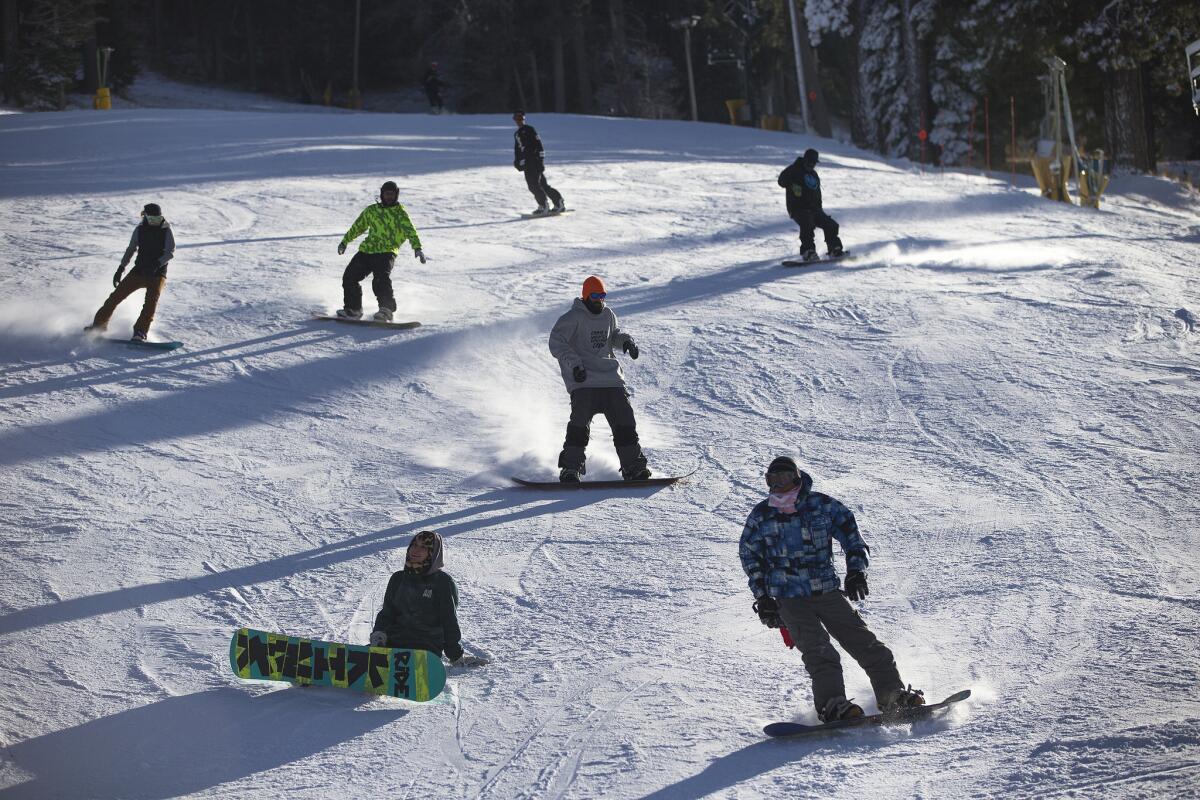Newsletter: Water and Power: San Diego has too much water
- Share via
Your guide to the California drought from the Los Angeles Times.
NEWS AND POLICY
Lessons learned: An Australian desalination expert thinks his country’s experience with the technology bodes well for California, which will see a new plant come online in two weeks. “We learned that it is important to develop a diverse portfolio of water resources that act independent of weather and climate, including desalination, recycling and conservation, and the entire San Diego region will benefit from the Carlsbad facility going online,” writes Neil Palmer. The new Carlsbad plant is expected to open on Dec. 14 after 18 years of work by developer Poseidon and the San Diego County Water Authority.
El Niño and trash: L.A. is considering suspending trash pickups during the expected El Niño rainstorms this winter. Why? Trash cans -- and garbage -- can clog storm drains and cause flooding. When a powerful storm pummeled Boyle Heights in October, one poorly placed mattress caused havoc.
Too much water? With San Diego about to open a $1-billion desalination plant, the region is facing an unusual problem in drought-plagued California: It has too much water. And it is coming close to capacity for storing water too.
ON THE GROUND
Fragile infrastructure: Will the levees in the Sacramento Delta hold when the rains come with El Niño? Some are questioning the structural integrity of the levees in advance of what is likely to be a very wet winter. "The biggest challenge is to take something and look at it and say if we don't deal with it now, it's going to be a crisis in the future,” said Will Travis, a sea level planning consultant.
Rain and snow: Rainfall in the Sacramento area was below average in November, but relief could be on the way with rainstorms later this week. In addition to the wet weather, gusts could reach up to 40 mph. Snowfall is expected at 5,000 feet.
OFFBEAT
Duck hunt: The drought has made it tougher for hunters to go after waterfowl. That’s because many of the marshes and rice fields that birds call home have dried up. The decline in duck hunting is also hurting local economies that typically see a boost from hunters using gas stations, restaurants and hotels along their trips. “Much like farms and cities, many of the waterfowl refuges are dependent on deliveries from the complex state and federal plumbing networks that move water north to south in California. As the state’s reservoirs shrink, the amount of water made available to some public refuges has been severely curtailed."
Sounds of silence: The drought has changed the soundscape of California. In Northern California, the silence is a reminder that many of the region’s birds have taken flight.
BIG IDEAS
“It doesn’t matter if it rains for 40 days and 40 nights, here the water table is never going to go up.”
-- Madera Rancho resident Carey Wilson, whose well went dry
"The buds aren't quite as large as they should be and the needles aren't as long as they should be."
DROUGHT SNAPSHOT
Photo caption: Snowboarders glide down a hill at Mountain High Ski Resort. The temperature was 28 degrees in the afternoon on Nov. 28. (Gina Ferazzi / Los Angeles Times)
DAILY TIP
Should you be concerned about flooding this winter as El Niño sweeps in? The California Department of Water Resources explains how to assess your risk and prepare for what’s ahead.
LOOKING AHEAD …
Tuesday: The state Water Resources Control Board will announce conservation figures for the month of October; the L.A. Board of Water and Power Commissioners will meet.
Tuesday-Friday: The Assn. of California Water Agencies will host its fall conference in Indian Wells.
Please let us know what we can do to make this newsletter more useful to you. Send comments, complaints and ideas to Alice Walton or Shelby Grad.
Sign up for Essential California
The most important California stories and recommendations in your inbox every morning.
You may occasionally receive promotional content from the Los Angeles Times.









